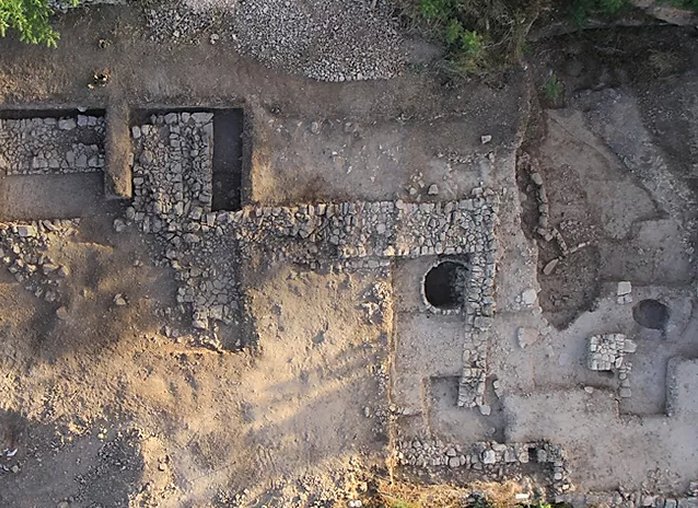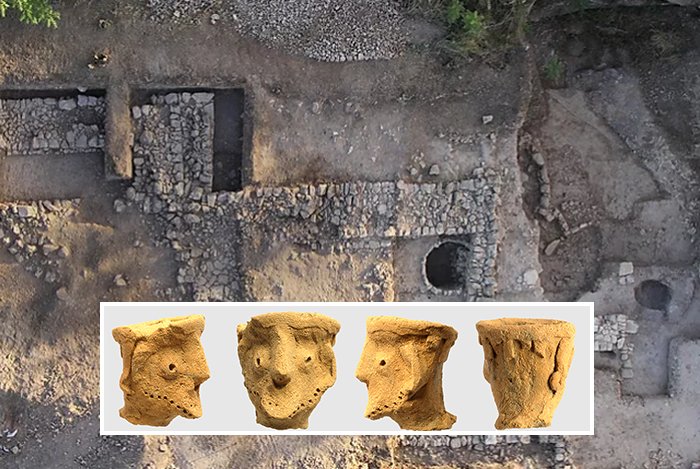Conny Waters – AncientPages.com – Sometimes archaeologists uncover evidence that confirms Biblical accounts, but not always. Ruins of a mysterious ancient temple in Jerusalem speak against certain Biblical stories.
The Israel Antiquities Authority (IAA) is currently excavating at the Biblical city of Moza and investigating the monumental Iron Age temple discovered some years ago.

The Iron Age temple at Tel Moza. Credit: Tel Moza organization
Tel Moza is located approximately 7 km northwest of ancient Jerusalem (the City of David). It’s an important archaeological site that sheds new light on the ancient history of Judah.
Researchers say the Iron Age temple located in the heart of Judah contradicts Biblical depictions. Archaeologists have examined the area under the complex’s earliest floor, which includes cultic installations and artifacts such as anthropomorphic and zoomorphic figurines and a large decorated cult stand. According to Ph.D. student Shua Kisilevitz, these latest findings raise many questions.
“Could a monumental temple really exist in the heart of Judah, outside Jerusalem? Did Jerusalem know about it?” “If so, could this other temple possibly have been part of the Judahite administrative system, Kisilevitz asks.
See also:
Mysterious Stone Table Found At Biblical Temple In Jerusalem – Evidence Of The Ark Of The Covenant?
Skull Of Biblical Giant Goliath Is Buried On The Hill Golgotha In Jerusalem – New Claim
Ancient Hebrew Inscription Reveals Location Of Biblical Mount Sinai
The Bible details the religious reforms of King Hezekiah and King Josiah, who consolidated worship practices to Solomon’s Temple in Jerusalem and eliminated cultic activity beyond its boundaries.
“However, our analysis of the archaeological finds and biblical texts clearly demonstrates that the temple at Moza conformed to ancient Near Eastern religious conventions and traditions and biblical depictions of cult places throughout the land.
It has become clear that temples such as the one at Moza not only could but also must have existed throughout most of the Iron II period as part of the official, royally sanctioned religious construct.”
“Despite the Biblical narratives describing Hezekiah’s and Josiah’s reforms, there were sanctioned temples in Judah in addition to the official temple in Jerusalem.
Anthropomorphic figurines from Tel Moza. Credit: Israel Antiquities Authority
Our discoveries thus far have fundamentally changed the way we understand the religious practices of Judahites,” Oded Lipschits of TAU explains.
At the site, archaeologists discovered many valuable ancient artifacts and structures, including human-shaped figurines, horse figurines, a cult stand decorated with a pair of lions or sphinxes, a stone-built altar, a stone-built offering table and a pit filled with ash and animal bones.
The archaeological discovery provides an important opportunity to study the formation of cult and religion in the region at the time and provide a framework for the formation of the Kingdom of Judah.
See also: More Archaeology News
According to the study, the construction of a central cult location with regulated worship dedicated to this purpose was a natural progression for a growing community. As the site’s function as a granary intensified, a temple was constructed to ensure economic success and to strengthen the control of the local leaders over the community around the economic and cultic center.
The study of the economic function of the site in tandem with its religious function strengthens the idea that a local polity emerged in the Moza region in the 10th century B.C., possibly hailing the establishment of a Judahite polity later in the era.
“We suggest that the Tel Moza temple was the undertaking of a local group, initially representing several extended families or perhaps villages that banded together to pool their resources and maximize production and yield,” the researchers write. “The rest remains to be discovered.”
Written by Conny Waters – MessageToEagle.com – AncientPages.com Staff Writer







